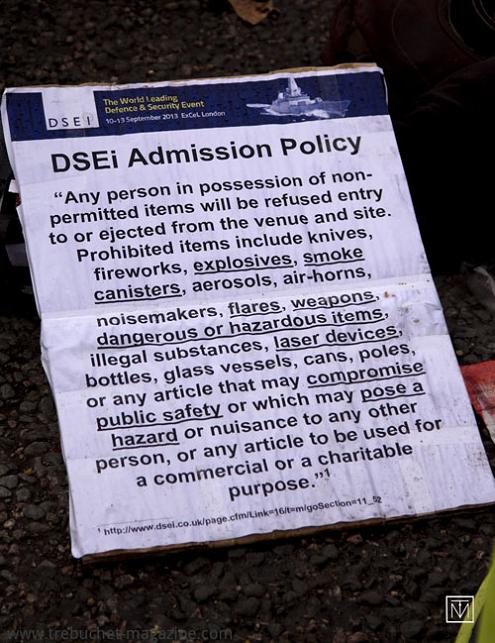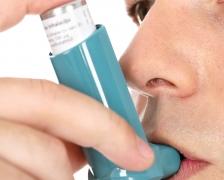[dropcap style=”font-size:100px; color:#992211;”]S[/dropcap]omewhere, a demented spirit of irony is laughing its bitter little face off.
Exposure to fumes released during the firing of military small arms can lead to a decline in lung function, according to a new study.
The research, which presented at the European Respiratory Society (ERS) Annual Congress in Barcelona today, suggests that members of the armed forces who are regularly firing small arms could be putting their lung health at risk.
Over the last 5 years, the armed forces in Norway have started to report ill health after live firing training. This new study aimed to characterise the health effects from the use of these weapons and investigate which components in the emissions were causing the health effects.
 Admissions restrictions to London’s Arms Fair held on September 6th 2013. Ironic, no?
Admissions restrictions to London’s Arms Fair held on September 6th 2013. Ironic, no?
Researchers from Oslo University Hospital and the Norwegian Defence Research Establishment examined 55 healthy, non-smoking men from the Norwegian Armed Forces. They tested the exposure to fumes from three different types of ammunition, one leaded and two lead-free, used in an assault rifle. [quote]fumes from military
arms are causing
a decline in lung
function shortly after
firing practice[/quote]
Each participant had a spirometry test, which measures lung function, before the shooting, immediately after and 24 hours after. A tent was used during the shooting to control other exposures.
The findings revealed that there were no significant differences in the types of ammunition used, but all groups experienced a decline in lung function shortly after shooting and at 24 hours after exposure, compared with the pre-test levels. The results showed that lung function, measured by (FEV1)*, declined by a mean average of 5% across all groups at 1.25 hours after shooting and by 7% at 24 hours after shooting.
Anne-Katrine Borander, lead author of the study from the Oslo University Hospital, said: “The findings from our small sample show that fumes from military arms are causing a decline in lung function shortly after firing practice.”
“These lung function changes are comparable to the effects caused by other occupational risk factors, such as organic dusts in farming and cotton workers. Although we noticed this decline for all types of ammunition, further research can now be undertaken to look at specific exposure components to help design better ammunition, and to continue implementation of other measures for avoiding these effects.”
* FEV1 is the maximal amount of air you can forcefully exhale in one second. It is then converted to a percentage of normal. This is the standard measure of lung function.
Main Photo: Kailas Trebuchet
Sidebar photo: Freedigitalimages.net/Marin
Article source: European Lung Foundation

Some of the news that we find inspiring, diverting, wrong or so very right.




















